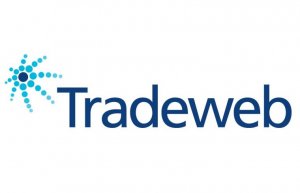Satellite Imagery Analytics: A Helping Tool For Financial Institutions
EOS Data Analytics provides agri-banks with satellite monitoring solutions to streamline loan risk assessment

In the light of global food demand and climate change caused by the greenhouse effect, agriculture has been undergoing significant transformations to meet emerging challenges. Advancing technologies make it possible to enhance traditional agricultural approaches and shift towards more sustainable practices. The global smart farming market amounted to $14.1 billion in 2021, with a projected growth of $31.2 billion by 2030.
Smart agriculture allows farmers and other stakeholders to optimize farm management and make data-driven decisions. However, landowners, especially smallholding farmers, often require financial support from agricultural banks to implement new technologies. Generally, granting loans is a complex process for both growers and financial institutions. To avoid credit default risk, banks need accurate and reliable information about farmland yielding capacity to ensure that a farmer will pay off the debt. The good news is that thanks to modern agtech, issuing loans can be less complicated and time-consuming.
EOS Data Analytics, a global provider of AI-powered satellite imagery analytics, offers agri-banks and other agriculture-related financial institutions cutting-edge tech solutions to support loan risk assessment with accurate data on farms’ productivity and harvesting capacity.
“Evaluating a farm’s crop-producing power can be a bottleneck in the loan risk assessment process. It often happens that either landowners can’t submit necessary farm-related documents to banks, or the provided information is dubious and should be verified. In this aspect, crop monitoring tools may come useful, giving access to farms’ historical data indispensable for understanding farmlands cropping ability,” says Mohammed Altaqatqa, Partner Sales Manager at EOS Data Analytics.
EOS Data Analytics does its bit in developing sustainable agricultural practices. Video: EOS Data Analytics
Today financial institutions use predominantly conventional methods for identifying a farmer’s “eligibility” to be granted a loan. Bank employees analyze tons of documents on a farm’s historical performance to determine whether a credit default risk occurs. The complexity of such analysis may hamper the loan approval process and cause delays unwanted for both parties — the farmer and the bank. If banks need to prove information given by farmers as to the farm’s state, they may even send scouts for an on-site field inspection to complete the whole picture with missing puzzles. Lack of supporting documentation often leads to a denial of credit justified by the uncertainty in the farm’s profitability.
Working on loan risk assessment, banks typically encounter the following pitfalls:
- Insufficient or inaccurate data — lack of trustworthy information impedes loans approval and may eventually result in a loan refusal;
- Risk of false documentation — sometimes the veracity of the documents can be questionable, requiring extra verification;
- Necessity of fields’ inspection — if the information provided on paper is not enough to make a decision, banks may assign scouts to physically check fields’ condition and gather additional insights;
- Yield prediction — banks need to forecast yields based on the farm’s current and historical state to make sure a farmer can pay a loan back.
Crop monitoring tools powered by satellite imagery may significantly ease this “analytics burden,” providing financial experts access to close-to-real-time data from fields. For example, EOS Crop Monitoring, online software for remote crop surveillance and farm management, comprises miscellaneous information on vegetation state in one platform, allowing bank specialists to have actual farm analytics or historical trends at their fingertips.
The platform’s intuitive and understandable interface helps operate the tool with minimum effort. Users can quickly get essential farm information using a field leaderboard that displays main field parameters in one table.
Besides this feature, risk assessment specialists can find great value in historical data on weather and field productivity, crop rotation, and soil moisture covering at least the last five years. Additionally, upon special requests, EOS Data Analytics can carry out custom yield prediction projects to provide banks with data-backed insights for loan risk evaluation. Moreover, the company is launching the satellite constellation EOS SAT soon, aiming to deliver the most accurate data to its customers.
EOS Data Analytics offers agri-banks two main partnership options — the out-of-the-box platform for monitoring 5,000+ hectares and the white label solution allowing for the platform’s customization, including domain name, brand logo and color palette, and select feature set.
Whether a bank chooses the pre-packed or white label solution, the EOS Crop Monitoring platform will help:
- Streamline loan risk assessment with the help of satellite technologies;
- Minimize credit default risk by providing analytics on farms’ cropping power;
- Expedite loan processing and optimize overall workflow;
- Carry out custom projects on yield prediction and crop classification.
Also, agri-related banks and financial institutions will get the possibility to have the EOS Crop Monitoring platform as a value-added service to their clients.
EOS Data Analytics believes that remote sensing technologies can boost agri-banking in the US and has strategic plans to strengthen this industry with satellite-driven solutions.









